Other Free NCLEX RN Study Guides:
There are 8 Modules in NCLEX RN Study Guide. Here you can navigate all the NCLEX RN Study guide modules.
- NCLEX Study Guide Home
- Module 1 | Managing Care Of the Patient
- Module 2 | Overall Safety and Control of Infections
- Module 3 | The promotion of health and maintenance
- Module 4 | Integrity in psychosocial functioning
- Module 5 | Providing Basic Care and Ensuring Patient Comfort
- Module 6 | Therapies: Pharmacological and parenteral
- Module 7 | Potential risk reduction
- Module 8.1 | Adapting physiologically
- Module 8.2 | Adapting physiologically
- Module 8.3 | Adapting physiologically
let’s get started right away.
In this section of the NCLEX RN study guide, we cover a range of subjects including immunization, family education, pain assessment, and more.
Immunizations
The concept of immunization is having the body build up its defenses against a certain disease.
This defense comes in the form of antibodies which are introduced to the body via a vaccine.
In turn, these antibodies will stop the patient from getting the disease or if they do, a milder form of it.
By introducing some of the antigens of the disease through vaccination, the body will begin to produce the antigens needed to fight it.
The goal is herd immunity.
This is when the vast majority of the population is immune to a specific disease.
Vaccine types
There are numerous types of vaccines available today including:
- Conjugated vaccines
- Killed virus vaccines
- Live virus vaccines
- Recombinant vaccines
- Toxoid vaccines
You can read up on these in more detail in your coursework.
Now let’s look at a few specific vaccines that a nurse will come across during their daily activities.
Hepatitis A vaccine
Two doses of this vaccine are given to young infants as protection against Hepatitis A, which is a contagious virus that results in liver disease.
These are given at:
- 12 months
- 18 months (or a six month period following the first dose)
It can be given to older children as well.
Hepatitis B vaccine
Three monovalent HepB injections are necessary to ensure immunity against Hepatitis B which is passed on through body fluids and blood.
This is a necessity as Hep B can also cause liver problems and even cancer.
The vaccine is administered:
- At birth
- 1-2 months thereafter
- At 24 weeks
Those who haven’t been vaccinated and are older can receive two doses (adolescents). The second should be administered within four to six months of the first.
Rotavirus vaccine
This vaccine is to prevent Rotavirus, which causes severe diarrhea.
It’s administered in three doses in infants:
- 2 months
- 4 months
- 6 months
Inactivated Poliovirus vaccine
This protects against poliomyelitis, a viral infection that before the vaccine was introduced in 1955, resulted in 20,000 cases per year.
IPV (injectable polio vaccine) is administered in four doses:
- 2 months
- 4 months
- 6-18 months
- 4-6 years as a booster
MMR vaccine
This protects against measles, mumps, and rubella and is given in two doses:
- 12-15 months
- 4-6 years
There are a few other vaccines that you can work through which will appear in your coursework:
- Varicella
- DTaP and Tdap
- HPV
- PCV-7
- PPV
- Meningococcal
- Hib
Summary of the schedule for infant immunization
Here’s a handy schedule that breaks down how the time frame of when these vaccines should be administered to infants:
- Hep B: Administered at birth, 1-2 months, and then last dosage at 6-18 months
- Diphtheria/pertussis/tetanus: Administered at 2, 4, and 6 months with the last dosage at 15-18 months
- Hib: Administered at 2, 5, and 12 months but the last dosage can be later
- Poliovirus vaccine: Administered at 2, 4, and between 6-18 months
- MMR vaccine: Administered between the ages of 12-18 months
- Varicella: Administered at 12 months
When giving immunizations, the immunization status of the child receiving them should be evaluated.
It’s a requirement in states across America that children are immunized before they go to a licensed daycare center or school.
When it comes to vaccines themselves, they must always be stored correctly.
Administering the vaccines should be carried out as per guidelines while consent should be obtained from the parent/guardian of the child.
Vaccine side effects
There are a number of side effects that can result from the administration of these vaccines.
These include:
- Fever
- General irritability
- Loss of appetite
- At the site of the injection – swelling, and redness
Should any of these last for more than two days, the parents should contact a healthcare provider.
Education theory

In this section, we cover various forms of education theory.
Theory of social learning: Bandura model
This model proposes that learning is the result of observing, organizing, and rehearsing modeled behavior.
For modeling to occur, four conditions are required:
- Attention: A range of variables (physical, social, and environmental) play a role in modeling and the degree of attention paid to it
- Retention: In order to retain models, people create mental images, make use of symbolic coding, organize their thoughts, and mental or physical rehearsing. The degree they carry this out determines their capacity to remember models
- Reproduction: Depending on their physical and mental capabilities, this is their ability to reproduce a model they’ve been exposed to
- Motivation: People feel motivated when they have previous performance, rewards, or vicariously modeled others’ behavior
Transtheoretical model for change
The model conveys concepts that can be applied to both family members and patients in the process of educating them.
The stages of this model involve the following:
- 1st stage – precontemplation: The patient is unaware that their health behavior needs to change
- 2nd stage – contemplation: Realization that change is necessary. Patients do so after recognizing that the current behavior is unhealthy. Additionally, they have considered the consequences of carrying on as they are currently
- 3rd stage – preparation: In this stage, the patient visualizes the change in the future and formulates a plan to achieve it
- 4th stage – action: The patient begins to note positive changes in their health behavior after making the required changes
- 5th stage – maintenance: The patient is able to maintain changes over time by using strategies to avoid returning to their former behavior
- 6th stage – termination: The patient will not resume their previous unhealthy behavior because they’ve incorporated change behavior into the way they function daily
Force field analysis: Kurt Lewin
This is the brainchild of social psychologist Kurt Lewin and attempts to analyze the driving and restraining forces when it comes to change.
Leaders, incentives, and competition are all examples of driving forces that encourage and motivate change.
Poor attitudes, hostility, inadequate equipment, and a lack of funds are all examples of restraining forces that resist change.
A force field analysis diagram is used to talk about the variables related to a proposed process change.
This is done by:
- A middle column should be used to write down the proposed change
- Brainstorm driving and restraining forces
- Provide scores to these forces
- Evaluate the proposed change’s value
- Reduce or eliminate restraining forces by developing a relevant plan
Model of change theory: Kurt Lewin
This can be used to help in the decision-making process that patients will need to go through to make changes.
It proposes a three-part procedure:
- Unfreezing: In this phase, the patient recognizes the need for change and removes all barriers to it
- Actual change: In accordance with expected outcomes and goals, the patient put the change into effect
- Refreezing: This is sustaining the change so it eventually becomes a habit
Education principles

Adult learning principles
When planning strategies for teaching patients, parents, families, and staff, the following principles of adult learning should be considered.
- Goal-orientated and practical: Always keep the goal in focus while using problem-solving exercises and collaborative discussion. Overviews and examples should be provided too
- Self-directed: Participating actively and seeking input. To achieve goals, different options are allowed. Responsibilities given
- Knowledgeable: Respect must be shown to the education and life experiences of participants, while they should be validated and feedback asked of them. New material should be related to things they are familiar with
- Relevancy-oriented: How the information will be applied must be explained while objectives must be defined clearly
- Motivated: Whenever possible, award staff certificates of professional advancement or continuing education
Styles of learning
Not everyone learns in the same way.
A range of teaching methods may be required that tie in with all three learning styles should be used.
These learning styles are:
- Visual: Here, picture guides, written directions, charts, photos, diagrams, or demonstrations are necessary for people who learn easiest by reading and seeing
- Auditory: Here, the best learning is achieved through talking and listening. So procedures should be explained, with the learner repeating them following a demonstration. Question and answer sessions are also necessary, while if audio lessons are available, they can be provided too
- Kinesthetic: Here, a more hands-on approach that includes practicing and handling is the way to go. Allowing people to demonstrate what they have learned is an excellent idea, while they should be encouraged to handle supplies, for example.
Teaching approaches
Let’s quickly touch on the types of teaching approaches that can be used.
They include:
- Educational workshops
- Lectures
- Discussions
- One-on-one discussions
- Learning online
What often dictates the approach is the number of people that need to be taught.
Factors that affect readiness to learn
These can include:
- Physical factors
- Overall experience
- Emotional and mental status
- Overall knowledge and education
Teaching older patients
In some situations, a nurse will have to teach something to an elderly patient.
Before doing so, it’s best to determine their overall level of functioning.
The following can be influenced by illness and aging:
- They struggle to retain information due to short-term memory loss
- There could be an overall decrease in their ability to concentrate
- They could be a delay in their reaction times
- They may have problems hearing or seeing properly
While teaching, the family should be present so they can hear what needs to be learned as well.
The pace at which the teaching takes place is ultimately governed by the pace at which the patient understands.
Teaching those with learning disabilities
The starting point here is to focus on the actual learning disability the patient has:
- For those with visual problems, the preferred method of teaching is verbal with lots of repetition. If the session can be recorded and played back to the patient at a later point, it should be
- For those with auditory perception problems, the preferred method of teaching is visual. Role-playing, demonstrations, and trying out the procedure are all excellent methods to use when teaching. Computers are particularly useful here
- For those with expressive problems, the patient needs time, first to process what has been taught and then to ask questions. Utilizing the senses, carrying out demonstrations, and using hand gestures are all useful tools when teaching this group
Teaching disabled patients
Here’s some ideas for teaching patients that have disabilities
- The key is to empower patients so they have a sense of control and coping. This is easily achievable by providing them with the information they need but never overwhelming them
- Your plan of action should take into account the patient’s learning readiness and priorities
- Keep track of what they’ve learned using a skills checklist
- Always provide feedback, support, and praise
- Lastly, patients should be provided with resources that can be used after they are discharged
Theories: Human development and growth

Human development issues
Below are some human development issues that can be analyzed by theory.
- Universally vs context specificity: Universality says that people will develop the same way regardless of their culture while context specificity says that culture influences development
- Assumptions regarding human nature: There are three doctrines regarding this – original sin (children need to be taught good because, by nature, they are bad), innate purity (children are, by nature, good), and tabula rasa (children are neither good nor bad when born but must be taught wrong from right)
- Behavioral consistency: No matter what the situation is, depending on who is interacting with them, children will behave in the same way
- Nature vs nurture: In the first, development is linked to genetic influences while the second says that development is influenced by social influences
- Continuity vs discontinuity: Continuity says development proceeds steadily and changes have cumulative effects. Discontinuity says that later development is not influenced by the effects of early development while progress thereof is in a stair fashion
- Passivity vs activity: With passivity, outside forces can have an impact on development. Activity is more of how a child reacts to these outside forces as well as how their development is influenced by them
- Critical v sensitive period: The critical period is when a child will be able to pick up new behaviors and skills. The sensitive period is more flexible in terms of the time frame and here, the child is susceptible to learning new skills, regardless of the normal learning curve.
Erik Erikson: Developmental tasks
Let’s look at the developmental tasks model as put forward by Erik Erikson
- Trust vs mistrust: This takes place from birth to 1-year old. Here, should the needs of the child be met, they will develop faith, trust, and optimism but if not, mistrust develops
- Autonomy vs shame/doubt: This takes place from 1 to 3 years old. Here, a child is looking for choice while becoming independent, handling tasks around basic self-care. Doubt and shame can result if this new independence (which develops willpower and self-control) is not fostered
- Initiative vs guilt: This takes place from 3 to 6 years old. Without outside influence, a child will begin self-directed play on their own. Based on the support they receive while showing initiative, this could result in direction/purpose or guilt
- Industry vs inferiority: This takes place from 6 to 12 years old. Pride and self-worth develop when a child feels competent and capable with a mindset that looks to do what’s right. Peer social interaction is important where feelings of inferiority or pride can result when achievements are compared
- Identity vs role confusion: This occurs between the ages of 12-18. Youth are expected to take on certain behaviors as role models and are pressured by their ethnicity, culture, family, peers, parents, teachers, and religion. Ultimately, they have to find their own identity
- Intimacy vs isolation: This takes place between the ages of 40 and 65. Here, roles related to work, community, and family are defined while adults carry out a number of tasks as they look to find their own niche as well as interests in the world of work
- Integrity vs despair: The final stage is for the age group 65 and older. Here overall life experience is put into perspective while the aging process is accepted
Other theories of human development include Freud’s Stages of Psychosexual Development, Piaget’s Theory of Cognitive Development, and Maslow’s Hierarchy of Needs.
These will be all covered in your coursework, so make sure you go through them there.
Disease prevention and the promotion of health
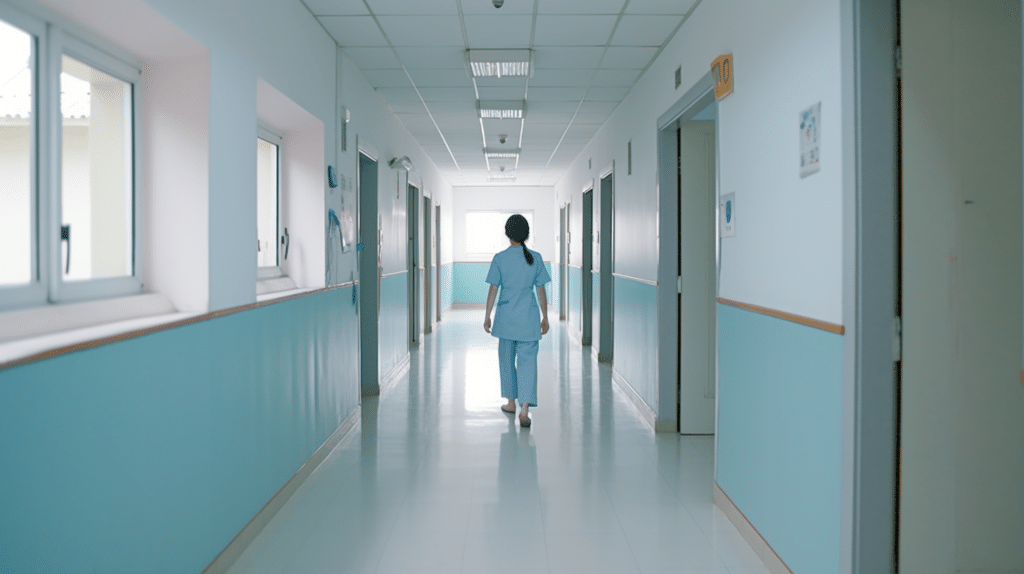
Health promotion
Healthy People 2030 is a program driven by the U.S. Public Health Service.
It has five main goals:
- Achieving a healthy, thriving life for all without preventable diseases, disabilities, injuries, or premature deaths
- Improving health literacy, eliminating health disparities, and achieving health equality
- Promoting health through the creation of conducive environments
- Assuring good health throughout the various life stages
- Designing policies that improve health and well-being in collaboration with leadership and key stakeholders
In all this program includes 62 areas with 355 total objectives.
It is divided into 5 sections:
- Health conditions
- Health behaviors
- Populations
- Systems and settings
- Social determinants of health
When we talk about the promotion of health, four areas are key:
- Lifestyle and choices
- Good nutrition
- Stress
- Physical fitness
Self-management of health
Health maintenance, disease prevention, and health promotion are all parts of health self-management.
When we talk of disease prevention, it can be broken down into three parts:
- Primary prevention: Here, prior to the onset of disease, measures are put in place to prevent it
- Secondary prevention: This involves screening, detecting, and treating diseases at an early stage in order to prevent their progression or occurrence of other complications
- Tertiary prevention: In this case, measures are taken to prevent comorbid conditions or complications from developing
Health screening
Let’s break this down into various age groups:
First, we have young adults screening (20 to 39 years).
- Full body physical: Every 5 years
- Blood pressure: Every 3 to 5 years if normal, more often if not
- Cholesterol: Ever 5 years
- Dental check-up: Annually
- Thyroid: Every 3 years
- Depression assessment: At every visit
- Breast exam: Every 3 years although self-examination should be every month
- Testicular self-assessment: Every month
- Pap smear: Every 3 years
- Vaccination for influenza: Every year
- Td immunization: Every 10 years
Then there are adult screenings (40 years and older).
- Full body physical: Every year
- Blood pressure: Every year
- ECG: Annually if know cardiac risks exist
- Breast exam: Annually with a mammogram every second year
- Colorectal cancer screening: Every year
- Prostate-specific antigen screening: Upon request
Illness prevention: Pediatrics

There’s quite a bit to cover in this section, so let’s jump straight in.
Disease prevention and the part that risk analysis plays in it
Risk analysis plays a critical role in not only disease prevention but health promotion too.
That’s because, based on the age and sex of the child, it helps identify their risk of current as well as future diseases, especially based on family history.
Risk analysis areas could include the following:
- Nutrition
- Exercise
- Cardiovascular
- Diabetes
- Hypertension
- Cancer
- Osteoporosis
- Vision
- Behavior
- Lifestyle
Risk factors then help identify the chance of developing the disease in terms of a low, medium, or high risk.
Risk factors: Neonates linked with maternal disease
An infant’s overall risk factors can be increased by several maternal factors:
- Diabetes mellitus: This can lead to hypoglycemia, macrosomia, birth defects, and even stillbirth
- HIV/Hepatitis B: These infectious diseases can be passed on to the infant. This can take place during pregnancy as well as during delivery
Fetal drug exposure and the implications thereof
Some prescribed drugs, but mostly those taken illicitly can have a massive effect on an unborn child.
These can include:
- Low birth weights
- Poor sucking and dysphagia lead to them failing to thrive
- Risk of HIV, hepatitis, and other congenital infectious diseases
- Risk of SIDS
- Withdrawal symptoms
- Problems associated with development and cognition that vary with age
Fetal alcohol syndrome and the implications thereof
Children born with FAS often have a range of birth defects as a result of their mothers drinking while pregnant.
These include:
- Facial abnormalities
- Neurological defects
- Growth retardation
- Behavior problems
Fetal nicotine/carbon monoxide exposure and the implications thereof
A fetus whose mother smokes during pregnancy is exposed to not only nicotine but carbon monoxide too.
This can lead to:
- Growth retardation
- Vasoconstriction as a result of nicotine which, along with oxygen transport interference caused by carbon monoxide, can result in fetal hypoxia. This could also lead to a chance of spontaneous abortion, premature birth as well as low weight at birth
- High risk of SIDS and perinatal death
- Learning disorders and cognitive deficiency
- Cancer risk increasing
Poverty-related risk factors
Sadly, when children are raised in poverty there are numerous risk factors that could affect them.
These include:
- No or incomplete immunizations
- Infections that occur frequently
- Not enough sleep
- Deficiencies in nutrition
- Problems with dental care
- Depression
- Injuries
Overall wellness evaluation
A completed assessment of a child is carried out during a wellness evaluation.
Part of this is securing the information to draw up a health profile which includes the following information:
- Measurements such as height and weight but also the circumference of their head
- Vital signs
- Temperature
- Nutrition profile
- Level of activity/mobility
- Screen test results (if carried out) and why the test took place
- Activities around health promotion and the prevention of disease
Injury prevention

Environmental assessment
A number of aspects should be considered in this regard including:
- Environmental health history
- Pediatric patient’s health and the environmental influences that play a role in it
- Environmental aspects to consider when the child patient returns home
- General aspects of environmental safety
Social situations and recommendations for parents/children
These include;
- Dealing with strangers
- Dealing with violence
- Dealing with bullying
- Overall automobile safety
Sports and recreation recommendations
These include:
- Risks regarding concussion
- Using helmets in sport where necessary
Youth Risk Behavior Surveillance System (YRBSS)
Six different facets of health-risk behaviors are monitored in this program which is conducted through the CDC:
- Violence and injury-causing behavior
- The use of tobacco
- The use of alcohol
- The use of drugs
- High-risk sexual behavior
- Unhealthy eating
- Lack of physical activity
Trends are assessed from data secured from states participating in the program as well as from local surveys that are carried out and include youngsters from grades 9-12.
STD prevention
There are five strategies that the CDC has implemented to prevent STD transmissions:
- Education
- Identification of infected persons, both symptomatic and asymptomatic who haven’t gone for treatment
- Diagnosing and treating those infected with STDs
- Infection prevention in partners
- Pre-exposure vaccination
The 5-P approach is also used to assess risk by looking at the sexual history of a patient:
- Partners
- Pregnancy prevention
- Protection
- Practices
- Past history when it comes to STDs
Prevention methods when it comes to the transmission of sexually transmitted diseases:
- Abstinence or if not, reduction in sex partners
- Pre-exposure vaccination
- Condoms (both male and female)
- Spermicides
- Other non-barrier contraceptive methods
Injury prevention mentions for toddlers, preschoolers, school going children as well as adolescents are covered adequately in your coursework, so we won’t go into great detail here.
Just make sure you are aware of the various measures depending on the age group specified.
Family education

In this section, we focus mainly on education for expectant and new mothers who are having/have had their first baby.
New mothers and their educational needs
These needs are never the same from mother to mother.
They will vary based on a range of factors including background, education, experience, expectations, and their age.
It’s not easy to assess what these needs might be, especially during a short hospital stay and it’s for this reason why, on the whole, education covers a variety of topics.
Let’s cover what this education should entail.
Care of the umbilical cord
The following should be taught to mothers when it comes to umbilical cord care:
- It should be protected from moisture. This is easily achieved by, instead of covering it with the diaper, fold the diaper under the cord
- Wash the cord with mild soap and water, rinse and then dry if it becomes soiled
- Irritation may result if the cord stump is covered by clothing
- Until the cord falls off – usually between 10 and 14 days – the infant should only receive sponge baths
- Any signs of infection should be dealt with immediately
Infants and safe positioning
When sleeping, an infant should always be placed on their back as this cuts the risk of SIDS which is more prevalent if they sleep on their stomach.
- When positioned on their back, the position of their head should be changed from one side to the other. This stops flattening from occurring
- Once a day, the infant should be turned to allow them to lie on their abdomen. This should only take place on a firm surface as a way to stop positional molding and strengthen both neck and head muscles
- Rather than leaving an infant in their carrier, they should be held
- Along with additional support, babies can be positioned on their sides but this should alternate after a period of time
Fecal and urinary elimination
A baby will usually pass a very black and tarry-looking stool during the first 24 hours.
This will change as the baby takes on formula or milk from their mother.
By day 5, babies are producing around five stools a day.
Any abnormalities should be reported and this could include stools that are watery, contain various colors, or are very hard.
Mild soap and water should be used to clean the skin when cleaning up following a stool while the skin should also always be checked for any signs of irritation.
By day 6 following their birth, a baby will have around 6-8 wet diapers a day.
Diapers should always be checked often, especially after feeding.
The skin should always be cleaned with mild soap and water or baby wipes.
Diaper rash is also something to consider.
To prevent this:
- Diapers should be changed when necessary
- The skin should always be cleaned
- The skin should be exposed to air from time to time. This can be done for a few minutes when diapers are changed
- Barrier cream can be used to help prevent diaper rash
Gagging/choking in infants
Infants are extremely susceptible to choking or gagging.
New mothers should be educated regarding the following in this regard:
- Babies should never be fed using a propped up bottle
- All small, hazardous items should be kept out of their reach
- When babies are being fed, they should be regularly burped. Usually this is after they have taken in about 2 to 3 ounces of milk. To burp the infant, place them on the shoulder, and rub or pat their back gently. A burg cloth should be put under their head. Should they not burp, the position can be changed, for example, to the opposite shoulder.
- While feeding, they should have their head elevated and kept in an upright position
- The nipple of the bottle should never run freely, but instead, it should provide a drip feed to the baby when drinking
Should an infant choke, they should be placed face down on a forearm while their body is tilted downwards.
The heel of the hand should then be used to thump them in the middle of their back and repeated until the item is dislodged.
CPR should be started should the child stop breathing while a call is placed to emergency services.
Neonatal CPR is covered in your coursework and you should know the procedures to carry it out.
Infant bathing
Once the umbilical cord has fallen off, an infant may receive a full bath in an infant tub.
Here’s what new mothers should be educated about in this regard:
- The environmental temperature in the bathroom should be warm
- The infant tub only needs to be filled to around 3 inches of water
- The water temperature should be warm and never hot and should be checked before the infant is placed in the tub
- The baby should be held to provide support. This is achieved by supporting the neck and hand by placing one arm under the upper back
- The free hand is then used to pour water over the infant. It is also used to wash their body and hair
- When drying the infant, care must be taken to ensure that this is done in a thorough manner
- No lotions or creams should be used on the infant
Car seats
During transit, infants should be placed in a car seat.
There are a few rules to follow in this regard:
- The seat should always be in the back of the car, but never positioned near any airbags and with the seat facing towards the rear
- The child should always be secured in the seat using the seat buckle
- To stop the head of the child from falling forward, the seat should be put in a reclined position
- Padding can be placed on the insides of the seat to stop the infant from falling to the side
Health history

A nursing health history includes several elements.
These are:
- Biological element: This covers details regarding the patient
- Main complaint: The reason why they are at the medical facility
- Present illness history: Details about the current health problem
- Prior medical history: Details about past problems, surgeries, etc
- Family history
- Systems review: To obtain a full subjective symptom report from the patient, this is necessary
- Lifestyle details: Including sleep, habits, diet, etc
- Social history: This includes ethnicity, family history, economic status, level of education, and more
- Psychological status
- Normal access to healthcare
The process of obtaining a health history from a patient is something that you should also know for the exam.
It’s adequately covered in your coursework, so there’s no need to go into any great detail here.
The same can be said for techniques used for physical examination.
These include palpitation, percussion and auscultation.
Assessment of pain

Pain pathophysiology
Pain can be broken down into different types.
Nociceptive pain
The term refers to pain that is caused by stimulation of neuroreceptors as a direct result of tissue injury or damage with pain severity determined by the degree of injury.
There are two subclassifications of this pain:
- Visceral pain: Related to the layer of viscera that protects the organs and can be related to genitourinary, cardiovascular, respiratory, or gastrointestinal systems
- Somatic pain: Related to bone joints, muscle tissue, and cutaneous tissue
Opioids are used to treat both these pain types.
Neuropathic pain
When the nervous system is injured in some way, neuropathic pain is the result.
An example of this is the spinal cord being compressed by cancer cells.
Nerves damaged by chemotherapy are also an example of pain that’s described as neuropathic.
Opioids and NSAIDs are used to treat this type of pain while nerve blockers can help as well.
Pain: Adverse systemic effects

Many systems in the body can be significantly affected by pain.
- Cardiovascular: As a response to pain, tachycardia and increased blood pressure will occur. This results in systemic vascular resistance as well as raised cardiac output. A decrease in cardiac output, however, may be seen in people with cardiovascular disease
- Respiratory: Pulmonary function may be compromised, while the ability to clear secretions or cough is impaired.
- Gastrointestinal: Pain can result in a decrease in motility but an increase in sphincter tone and because of that, Ileus may result as well as urinary retention. The gastric lining can be irritated by higher gastric acid secretion resulting in ulcerations. Other occurrences can include constipation, nausea, or vomiting. Aspiration pneumonia can result because of reflux while on some occasions, abdominal distention can occur
- Endocrine: Pain will affect hormone levels in different ways. For example, there will be a rise in catabolic hormones and a decrease in anabolic hormones. Other effects include carbohydrate intolerance, an increase in lipolysis, and retention of sodium which can result in fluid retention
- Hematologic: Pain can result in increased blood coagulation as well as platelets becoming more adhesive. Fibrinolysis generally reduces.
- Immune: The risk of infection increases due to the likelihood of leukocytosis and lymphopenia
- Emotional: Emotionally, pain can have an effect in various ways, including causing depression, anger, anxiety, lack of appetite, and struggling to sleep
Tools for pain assessment

One of the tools in this regard is the ABCDE method:
- Asking about the level of the pain and then systematically assessing it
- Believing the reported degree of pain the patient is experiencing is genuine
- Choosing, depending on the circumstances and the patient, the correct pain control method
- Delivering appropriate pain interventions
- Empowering both patients and their support structures to help control treatment
There are five elements that can be used when it comes to pain assessment:
- Quality: Here, ask the patients to describe the type of pain they are experiencing. For example, is it a burning pain, or a stabbing pain
- Intensity: Have the patient describe on a scale of 1-10 how intense the pain is
- Location: Have the patient explain exactly where the pain is located
- Duration: Have the patient explain how long the pain lasts. Is it continuous, or does it come and go
- Aggravating/alleviating factors: Is there anything that offers relief from the pain, or aggravates it?
While we won’t cover them here in great detail – you will find them in your coursework – you should understand the various tools for assessing pain in nonverbal or cognitively impaired patients as well as neonates/infants and pediatric patients.
Optimal pain assessment barriers

Let’s look at some barriers that can affect pain assessment.
These include:
- Professional
- System
- Patient
- Family
- Society
There are other influential factors that can affect pain perception including:
- Attitude/overall emotional state
- Cultural expectations
- Pain threshold
Psychological factors play a role in pain experience as well which include:
- Fear
- Depression
Medical record: Pain documentation
When it comes to pain documentation, medical records should include the following:
- The time the pain started, where it is located, the nature of the pain, and the overall degree the patient is experiencing using a pain assessment instrument
- All interventions should be documented (both non-pharmacological and pharmacological)
- Based on the expected response time, assess the first response to the medication
- Based on the expected duration of the medication, assess and document the duration of the response
- Any adverse effects should be noted
Assessment: Cardiovascular

As part of a patient’s cardiovascular assessment, they should be asked about cardiovascular diseases within their family.
Questions should focus on:
- Chest pains
- Edema
- Dyspnea
- Vertigo
- Fatigue
- Changes in consciousness (like fainting or passing out)
- Leg cramps
- Weight gain
- Other pain
Should a patient report experiencing chest pains, they should be asked about the intensity, timing, and location.
Also, anything that aggravates that pain, or brings relief should be documented too.
As part of their physical assessment, their vital signs should be taken, their heart and lungs listened to and a range of other tasks carried out which is covered in your coursework.
Any risk behaviors pertaining to the patient, such as smoking, obesity, inactivity, stress, and others should be brought to their attention and they should be helped to modify their actions.
Electrolyte levels and lipid profiles should be established by taking blood from the patient.
Heart sound assessments
Different cardiac disorders can be diagnosed by listening to the sounds a patient’s heart makes.
Areas to listen to include the following:
- Aortic area
- Pulmonary area
- Tricuspid area
- Apical area
- Erb’s point
The closing of the valves of the heart are represented by normal heart sounds.
- The closure of the mitral and tricuspid valve will present as the first heart sound (S1) or “lub”
- The closure of the aortic and pulmonic valves will present as the second heart sound (S2) or “dub”
Other heart sounds include:
- Gallop rhythms
- Opening snap
- Ejection click
- Friction rub
- Murmur
Electrocardiogram
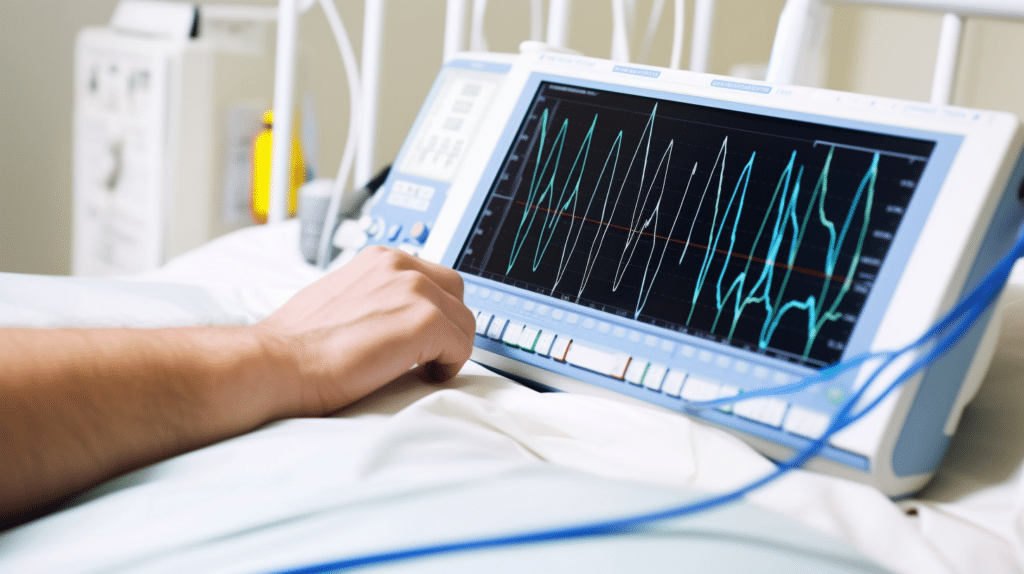
This is a display graphically of the heart’s electrical activity using intervals, complexes, and waveforms.
It comprises of:
- P wave
- QRS complex
- T wave
- U wave
Your coursework will have explanations of what each of these refers to as well as how and where the ECG leads should be placed on a patient.
Cardiac monitoring
On an electrocardiogram, various intervals and segments are evaluated as part of cardiac monitoring.
This includes:
- QT interval: The time it takes for the ventricles to depolarize and repolarize
- ST segment: During this period, the ventricles are in a plateau phase, depolarized, then recovering and repolarizing
Your coursework will contain the equations you should know to work out mean arterial pressure (MAP) as well as overall cardiac output and stroke volume.
Also remember that for proper cardiac function, oxygen saturation levels must be monitored with an understanding of what it means if these levels are increased or decreased.
Jugular venous pressure assessment
This is the use of the neck vein of the patient to assess pressure in the right heart as well as cardiac output.
This isn’t that accurate if the pulse is above 100, however.
To carry out this assessment, the following steps should be taken:
- The head of the patient should be elevated between 45 and 90 degrees and turned to the right
- Use a light, positioned at an angle to shed light on shadows and veins
- Use a ruler to measure the height of the jugular vein pulsation above the sternal joint (a normal height is less or equal to 4 cm above the sternal angle)
If it’s higher than this, this shows raised pressure in the right atrium which indicates right heart failure, pericarditis, and/or tricuspid stenosis.
Assessment: Respiratory system

Getting information about a patient’s respiratory history is the place to start with this but obviously, a patient should first be stabilized if they are suffering respiratory distress.
Finding the correct information includes asking questions about:
- Risk factors such as smoking, if they have inhaled toxins, smoke exposure, any allergies they may have and if they have had lung problems in the past
- The symptoms of their current respiratory problems should be established as well as their duration
Physical assessments should include checking vital signs, pulse oximetry, posture check, clubbing on nails, a skin assessment, looking for anxiety signs, edema as well as listening to the lungs.
Arterial blood gasses, electrolytes, and CBC can be determined by drawing blood from the patient while, depending on their symptoms, a sputum culture can also be taken.
Physiological airway clearance
Various aspects of respiratory failure lead to normal airway clearance.
Mucus, which is found in airways where it presents as a thin layer, helps to prevent foreign objects from reaching the lower airways by trapping them.
Usually, these foreign objects will either be swallowed and digested or coughed up.
Ventilation/perfusion ratio
A balance needs to be maintained between the respiratory and cardiac systems to ensure homeostasis.
The fact that the ventilation and perfusion of the lungs are balanced is indicated by the ventilation/perfusion ratio with a figure of 0.8 showing a normal ratio.
If it is higher, this shows that ventilation is too high and perfusion is too low usually which could be a result of hyperventilation, hypotension, or a pulmonary embolism.
Also, this is a clear indication that when compared to perfusion, there is more ventilation.
If it is lower, this shows that ventilation is too low and perfusion is too high which could result from atelectasis, lung disease, or pneumonia.
This is a clear indication that when compared to ventilation, there is more perfusion.
Breathing sounds: Normal and abnormal
When it comes to normal breathing sounds, there are three types:
- Sounds that are low and soft and heard above peripheral lung space are known as vesicular breath sounds
- Moderate pitch breath sounds, known as bronchovesicular breath sounds, occur in the upper lung fields
- Higher pitch breath sounds, known as tracheal breath sounds, occurs in the trachea
- An excessive amount of secretions within the airway, heard on both inspiration and expiration, will cause coarse crackles
- When peripheral airways open up again, this will result in fine crackles heard in the late expiratory phase
Pulmonary assessment: Diagnostic procedures and tools
This will depend on the injury/disease of the specific patient, but includes:
- A full on physical exam
- Electrocardiogram
- Chest x-ray
- Computerized tomography
- Oximetry
- Atrial blood gasses
- Electrocardiogram
- Echocardiogram
Capnography involving an end-tidal C02 detector
An end-tidal CO2 detector is used to measure the concentration of that gas in expired air during a capnogram using a capnometry.
This will provide the following information:
- PaCO2 levels
- Bronchial obstruction type and degree
- Ventilation air leaks
- In response to the demand for a new CO2 absorber, rebreathing will be precipitated
- Cardiac arrest
- Reduced metabolism
- Hypothermia
Arterial blood gasses
The effectiveness of ventilation, oxygenation, and acid-base status as well as determining oxygen flow rates are the information provided by ABGs.
Normal values for these readings include:
- Acidity/Alkalinity (pH): 7.35 to 7.45
- Carbon dioxide partial pressure (PaCO2): 35-45 mmHg
- Oxygen partial pressure (PaO2): ≥ 80 mmHg
- Concentration of bicarbonate (HCO3): 22-26 mEg/L
- Oxygen saturation (SAO2): ≥ 95%
Assessments: Endocrine, immunologic and oncologic

Endocrine disorders
Any changes related to growth, sexual development and metabolism may indicate an endocrine disorder.
Symptoms vary, but there are some generalized ones to look out for.
They include fatigue, the capacity to carry out ADLs, intolerance to heat and cold, sexual libido changes, sexual functioning problems, fluctuation in weight, problems sleeping, loss of memory, concentration problems, and mood swings.
Things to note while conducting a physical exam include:
- Assessments for edema
- A patient having a “buffalo hump” or “moon face”
- Exophthalmos
- Hair loss
- Facial hair in female patients
- Think of extremities with an enlarged trunk
Cancer
Irregular cell growth and reproduction are what cause cancer in humans and we know that this is a life-threatening disease.
While there is no cure for cancer, if left untreated, this cell growth can result in a tumor while cancer cells can extend through the body via their ability to metastasize.
Should the immune system not be able to deal with cancer cells and destroy them, they will reproduce, eventually forming a tumor.
Cancer development: Stages
When it comes to cancer development, there are three stages:
- Initiation: The cancer causing substance enters the body, reacts with, and causes DNA to mutate. Examples of this would be exposure to radiation or cigarette smoke
- Promotion: With this stage, the body is exposed to the substance that causes cancer over and over again, causing the likelihood of cancer cell reproduction
- Progression: When healthy normal cells are outnumbered by malignant cancer cells, this stage occurs. From this point on, the DNA damage done by the cancer cells means that it’s as cancer cells that normal cells will continue to replicate as
Immunology
The field of medicine that deals with infection and the ability of the body to fight it off is known as immunology.
In addition, it studies treatments and ways to improve the immune system’s ability to prevent cancer cell formation.
Tumor grading and staging
Tumor severity assessment is carried out in two ways – tumor staging or tumor grading.
The size and spread of the tumor is a measurement known as tumor staging which uses three parameters, commonly called TMN.
- T = tumor size (for the original local tumor)
- N = Show if there is the regional lymph nodes are involved
- M = indicates a distance metastatic spread has occurred
Tumor grading deals with the extent of differentiation of the tumor and is a histopathologic evaluation thereof.
This looks at the surrounding tissue compared to the tumor and the differences between the two.
Well differentiated tumors are those rated Grade 1 and when compared to normal tissue, there is not much difference in appearance.
Tumors graded 3 and 4 will see a significant difference between the tumor and the normal tissue.
These are said to be poorly differentiated and compared to a grade 1 tumor are significantly more aggressive in nature.
Other important terms
Let’s look at other important terms that you should know from this section, if you are unsure what they are exactly, you can find them in your coursework:
- Invasion
- Angiogenesis
- Metastasis
- Tumor heterogeneity
- Hyperplasia
- Metaplasia
- Dysplasia
- Anaplasia
Assessment: Neurological system

When assessing the neurological system, there’s a few things to focus on:
- The health history of the patient focusing on if they have abused drugs, suffered from alcoholism, what medication they are taking, if there is any history of neurological problems in their family, if they’ve suffered any trauma or fallen lately
- The patient should also be asked about any neurological symptoms that may have presented themselves lately
Consciousness and cognition are also assessed, while abnormalities in posture and movements should be checked too along with noting both facial movement and expression.
Assessment of the cranial nerve should be carried out while the patient should be checked for their ability to carry out ADLs along with checking overall strength, coordination, and balance.
There are a few other tests that can be carried out, but your coursework will cover them in detail.
Functional status assessment
Acts that form part of daily living activities as well as meeting basic needs fall under functional abilities.
They also include those acts that are essential to daily living.
To determine where a patient stands in terms of a functional assessment, the patient should be observed carrying out both ADLs and IDLs and the following should be recorded:
- How much independence they exhibit
- If they need to rest before completing the activity
- Overall nerve function
- Overall strength displayed and muscle function
- Their motion
- Their coordination
- Their cardiac and respiratory status
- To complete the activity, did they require any assistance
Functional Independence Measure (FIM) is the tool most commonly used to record a functional assessment.
NIHSS
Careful attention to direction is necessary when administering the National Institute of Health Stroke Scale (NIHSS).
The person should never be coached at any time and the person administering the test should never repeat any requests that they make.
There are 11 sections to the scale, with scores ranging from 0 (normal) to 4.
The scale sections are as follows:
- Level of consciousness
- Best gaze
- Visual
- Facial palsy
- Motor, arm
- Motor, leg
- Limb ataxia
- Sensory
- Best language
- Dysarthria
- Distinction and inattention
You can find out how the scale is applied to each of these sections in your coursework.
It will contain information on the Glasgow Coma Scale as well, which you should look through for the exam.
The scale has three main sections:
- Eye opening
- Verbal
- Motor
Each of these sections has four responses to choose from when assessing a patient.
Other brain injury complications are often a result of intracranial pressure (ICP) and here, the Monroe-Kellie hypothesis comes into play.
Be sure to understand how this can be used as well.
Cerebral blood flow, CPP and MAP
Cerebral perfusion pressure (CPP) can be worked out using an equation.
This takes mean arterial pressure (MAP) and subtracts ICP, which we mentioned above.
- Normal CPP: 60-100 mmHg
- < 60 mmHG sees focal or global ischemia as a result of hypoperfusion
- < 30 mmHG sees marked Hypoperfusion
- > 100 mmHG sees cerebral edema and hypertensive encephalopathy occurring
Assessment: Gastrointestinal system
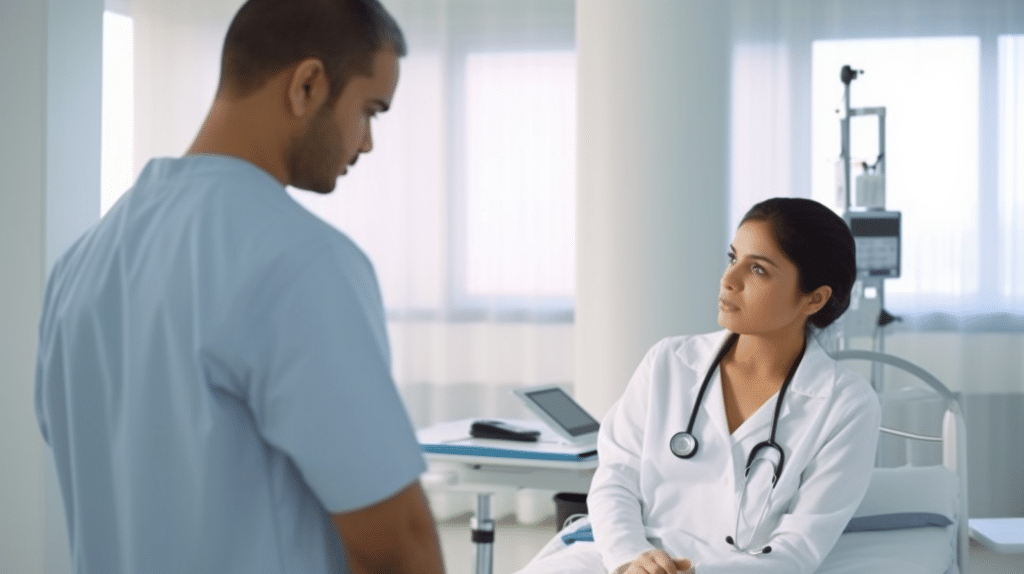
When assessing this, the following should be asked of the patient:
- Their personal and family history of problems related to the gastrointestinal system
- What risk factors do they partake in? Do they smoke, drink, use drugs or have a poor diet?
- Focus on specific gastrointestinal problems they may have, for example, diarrhea, abdominal pain, GI discomfort, and others
- Ask if they have had fluctuations in their weight
- Ask about their pattern of defecation and how it relates to their GI problems
The following should be examined during a physical assessment:
- Oral mucosa
- Teeth
- Tongue
- Pharynx
- Thyroid gland
- Parathyroid gland
- Skin: color, moisture, turgor, nodules or lesion present, or bruises
- Abdominal shape
- Bowel sounds
- Anal region: For dimples, tears, inflammation, fissures
Gallbladder/Pancreatic disease assessment
Should the patient display symptoms of gallbladder disease, they would include the following:
- Following eating fatty foods, the patient would experience epigastric discomfort
- Distention of the abdomen
- Pain in the right upper quadrant
- Nausea
- Vomiting
Pancreatitis symptoms can include:
- Severe pain in the abdominal region
- Back pain
- Vomiting extensively
- Dyspnea
Because pancreatitis is linked to alcoholism as well as gallstones, the patient’s history related to alcohol should be established and gallstones checked for.
Liver disease assessment
Abnormalities in the liver will only show in lab tests when this organ is 70% damaged or more.
Early disease, however, can be identified by assessing various risk factors which include:
- Alcoholism
- Drug abuse
- Risky sexual history
- Infection exposure
- Environmental toxin exposure
- Visiting countries with insufficient/poor sanitary facilities
Liver diseases symptoms should be discussed with patients to assess if they have experienced any which include:
- Abdominal pain
- Itching
- Fatigue
- Weight gain
- Anorexia
- Black stools
- Blood in stools
- Fever
- Problems sleeping
- Menstruation problems in women
- Lack of sexual libido
Physical assessment will include:
- Checking vital signs
- Checking the skin: for scratches, pallor, jaundice, dryness, bruising, petechiae, spider angiomas, and abdominal veins
- Red palms
Blood tests can be carried out as well.
While we won’t cover it here, your coursework will include assessing a patient’s nutritional status as part of this section, so be sure to go through that.
Assessment: Genitourinary
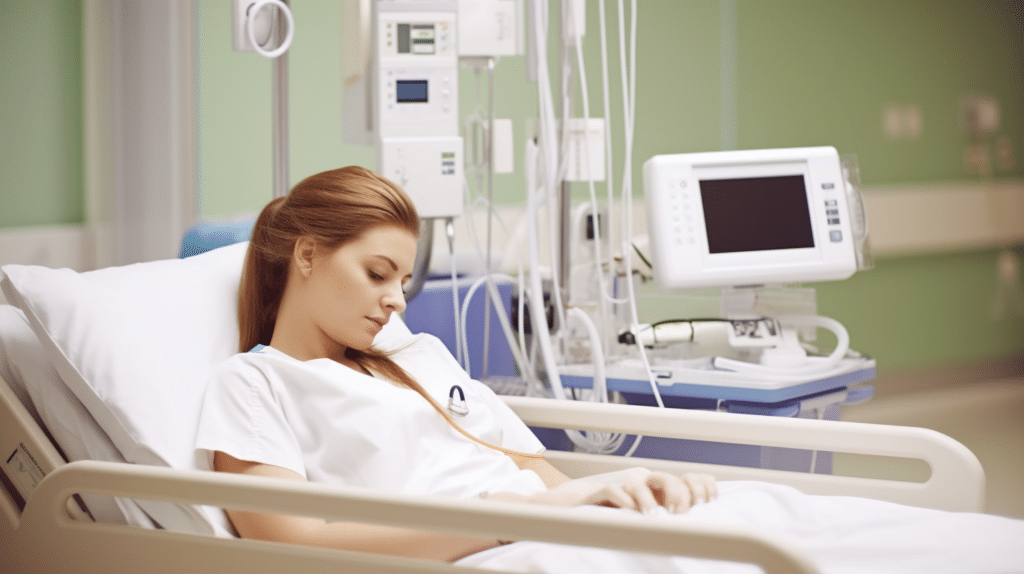
Kidneys and urinary tract assessment
This includes:
- Assessing the health history of a patient as well as that of their family specifically related to urinary system diseases, immobility, diabetes, exposure to chemicals, chronic diseases, having the pelvis exposed to radiation, alcohol abuse, drug abuse, STDS
- Identifying the amount of fluid they consume
- Ask if they have had any of the following symptoms: pain in the abdomen, hesitancy, urgency, straining while voiding, problems emptying their bladder, incontinence, fatigue, anemia exercise intolerance, chills or fever, blood when they urinate, and GI symptoms
A physical assessment includes:
- Taking vital signs
- Palpation of the kidneys and bladder
- After urination, percussion over the kidneys
- Checking herniation, irritation, or tears in the urethra or vagina
- Measuring DTRs
- Checking gait to see if they can walk heel-to-toe
- Ascites and edema palpitations
Fluid balance and kidney regulatory functions
Maintaining fluid balance is one of the kidney’s regulatory functions.
Three things are important here and while we will name what they are, you can follow up a little more on this section in your coursework.
- Osmolality: Urine’s electrolytes and molecules per kilogram.
- Specific gravity: Here, distilled water is used to compare the weight of the urine (the particles found in it).
- Antidiuretic hormone: Assists in the regulation of water excretion in the renal tubule by adjusting water absorption
Assessment: Musculoskeletal

A musculoskeletal injury assessment includes the following steps:
- Asking questions and listening to the answers from the patient, first responders, family, or friends. This can help determine how, when, and where the injury happened
- Observation of the general appearance of the patient, any obvious injuries they have, and more will provide an overall picture of what their living situation may be as well as their overall general health
- Physical examinations should look for injury patterns that are characteristic of a particular injury mechanism
Risk of falling assessments
To determine the risk of fall status of a patient, there are several factors that need to be taken into consideration.
These include:
- If they have sensory defects
- Their age
- If they have mobility problems
- If they have neurological disorders
- If they have a past history of falling
- If they are cognitively impaired
- If they suffer from depression
- What mediation they are on
Patients that are at risk of falls should be noted in a manner that other healthcare workers are aware.
Each medical facility will do this in its own way, a wristband is an example of how this can be carried out.
If a patient that’s considered a fall risk does fall, the cause of that fall should be evaluated.
Patients with disabilities assessments
Due to inaccessibility, those with disabilities can struggle when it comes to a health screening.
When carrying these assessments out there’s a few things to consider:
- Together with the patient, find the easiest way to get the necessary healthcare information needed on a regular basis, for example, weight, bone density tests, etc
- At all times, make sure you ask the patient if they need assistance during the assessment
- Note nonverbal communication coming from the patient, for example, they might see they are in pain through a grimace
- When sensation will be affected on a specific test, always make sure that you warn the patient beforehand
- All areas of the health history of a patient should be addressed
- Always give a patient enough time to respond, and if necessary, use an interpreter (but not a family member, if possible)
- The ability to perform ADLs will be impacted by a disability, so the impact thereof should be addressed. Also discuss how their disability impacts other areas of their lives, for example, their emotional status, their financial status, their work life, their family well-being, and more
Assessment: Geriatric/Elderly
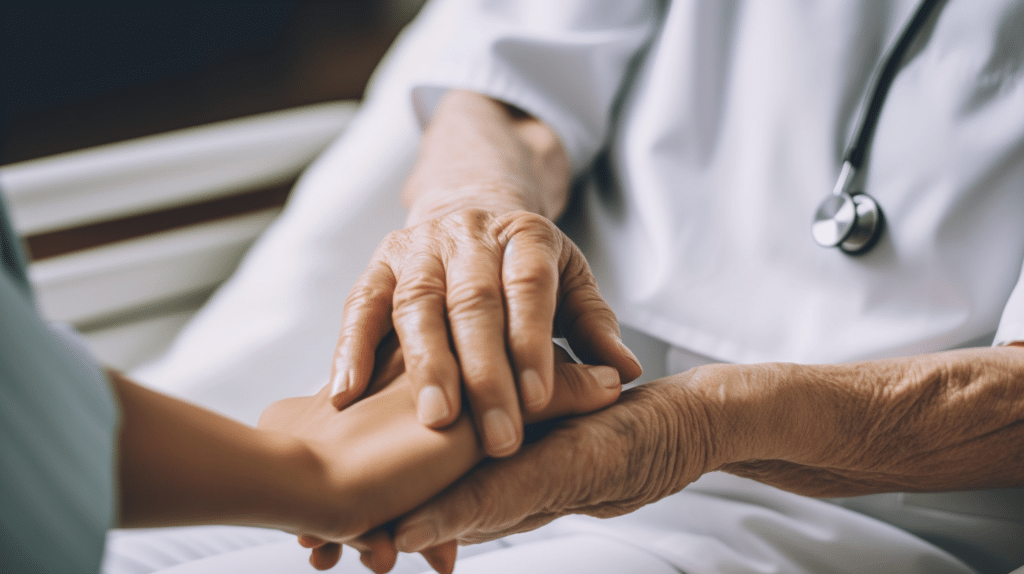
Carrying out proper assessments when dealing with the elderly is essential.
To start, they are three groups in which they can be placed depending on their age.
- Young old: from 65 to 74
- Middle-old: from 75 to 84
- Old-old: from 85 and older
Presentation of illness in the elderly and the factors that influence it
These three factors, which in combination with each other and even alone can make an assessment difficult, are:
- Underreporting the illness/symptoms: Many elderly people simply don’t want to go to hospital and therefore don’t always report accurately what’s wrong with them
- Pattern of distribution of the illness: This relates to problems/diseases that are more common to the elderly. It may be difficult to identify and differentiate the primary diagnosis in this regard
- Altered response to illness: Diagnoses and treatments can be difficult when this occurs as due to other problems, symptoms can be exaggerated or even in some cases, completely absent.
Changes related to the aging process
These changes take place biologically, psychologically, and socio-culturally.
- Biological changes: There is a decline in many organs, such as the kidneys, liver, and heart as well as in tissue and in some of the senses
- Psychological changes: These can happen in the following areas: memory, capacity to learn, and overall cognition. This can influence relationships between the person and their family, for example, while continued development will decrease. Attention span and concentration can decrease too, which results in poor performance when assessing patients. Memory loss can occur as well
- Sociocultural changes: This takes the form of changes in their overall independence, employment as well as social interaction with family and friends. Things they used to be able to do for themselves, which they might not be able to do anymore, include basic ADLs.
Evaluating a patient: Basic safety assessments
Four basic assessments should be carried out in this regard:
- Mobility assessment
- Level of awareness
- Their overall current condition
- Mental status
Assessment: Postpartum management
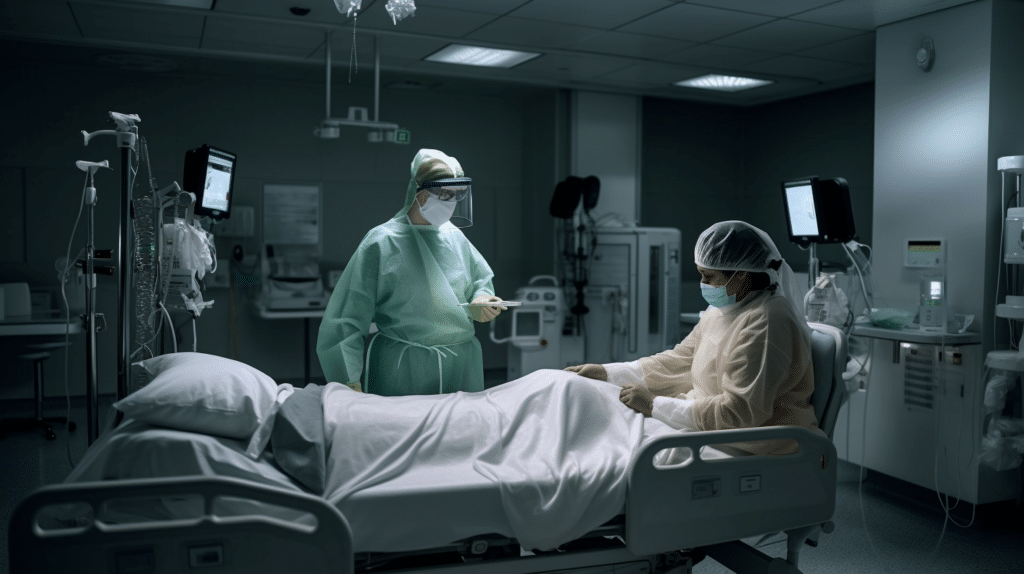
There are several aspects of a postpartum assessment to carry out including:
- Vital signs
- Temperature
- Alertness
- Fundus
- Lochia
- Perineum
- Bladder
- Rectum
- Level of pain
- Legs/feet
- Anesthesia
The procedures for all of these checks are covered in your coursework, so we won’t go into great detail about them now.
Wound care
Wound care is essential for any patient that’s undergone a Cesarean, or episiotomy, or who has lacerations.
Analgesia should be provided to them when necessary.
Your coursework will cover the exact details of how to provide wound care to someone who has had a Cesarean as well as how to deal with episiotomy/lacerations.
Management of a Cesarean section
The first hour of postoperative care includes:
- Checking VS every 5 minutes until the point the patient is stable. Thereafter, they are checked every 15 minutes for a period of an hour and then every 30 mins until the patient leaves the recovery area
- Checking the abdominal dressing and perineal pad every 15 minutes for the first hour. The thing to look out for is signs of bleeding
- Contraction of the uterine muscles is encouraged by having IV oxytocin administered to the patient
- In the case of the patient receiving a general anesthetic, they should be turned on their side and over a 24-hour period, they should be turned every two hours
- The level of anesthesia should be monitored every 15 minutes if the patient received an epidural or spinal anesthesia
- Monitoring of intake and output should occur. All urine samples should be checked for the presence of blood. If present, this could suggest bladder trauma
- As needed, analgesia can be given to help with pain management









